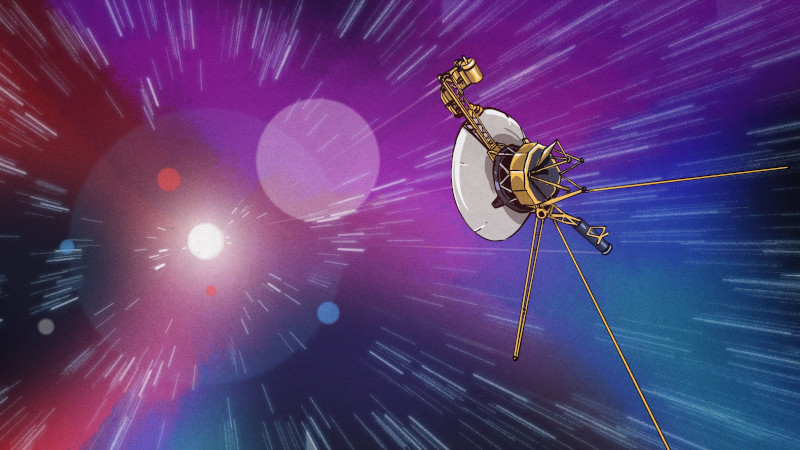It’s been just over 48 years since Voyager 1 was launched on September 5, 1977 from Cape Canaveral, originally to study our Solar System’s planets. Voyager 1 would explore Jupiter and Saturn, while its twin Voyager 2 took a slightly different route to ogle other planets. This primary mission for both spacecraft completed in early 1990, with NASA holding a press conference on this momentous achievement.
To celebrate the 48th year of the ongoing missions of Voyager 1 and its twin, NASA JPL is sharing an archive video of this press conference. This was the press conference where Carl Sagan referenced the pinpricks of light visible in some images, including Earth’s Pale Blue Dot, which later would become the essay about this seemingly insignificant pinprick of light being the cradle and so far sole hope for the entirety of human civilization.
For most people in attendance at this press conference in June of 1990 it would likely have seemed preposterous to imagine both spacecraft now nearing their half-century of active service in their post-extended Interstellar Mission. With some luck both spacecraft will soon celebrate their 50th launch day, before they will quietly sail on amidst the stars by next decade as a true testament to every engineer and operator on arguably humanity’s most significant achievement in space.
Thanks to [Mark Stevens] for the tip.
















Between them, the pictures from the Voyagers have “billions and billions” of views.
Voyager 1 is almost one day light far!
Light Day
Amazing video, can’t believe I’ve never seen this! Imagine if they had better cameras… amazing with what they had at the time!
Hi! Because of the video quality? It’s not state of the art fir its time.
The film material surely used to be of good quality when aired.
Even with Standard-Definition (SD) of NTSC or PAL.
The NASA letters and the logo in front of the spokesman used to be very sharp and well focused, I assume.
The reason it’s so blurry might be because of video tape or the setup used for digitizing. VCR, video grabber, codec etc.
A professional equipment makes quite some difference here.
Tube cameras made a very clean looking image, I think.
It’s all about the optics, rather, to get a good picture.
The Voyagers had hi-res monochrome Vidicon cameras with color filters, if memory serves.
However, the real challenge was to transmit the pictures back to earth, error-free if possible.
At max. resolution the bandwidth and time needed to transmit was quite high, I assume.
For example, domestic analog black/white video cameras had 800 to 1000 lines.
That was quite higher than the 525 lines (PAL: 625 lines) of ordinary color tv.